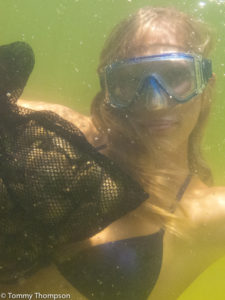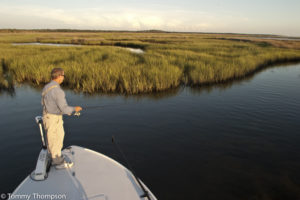Our Seagrasses, And What They Mean To Big Bend Anglers (And Snorkelers!)

The largest natural preserve, our Big Bend Seagrasses Aquatic Preserve is huge–almost a million square acres. And it’s a big part of the reason that our Gulf coastal fishery is so good. It stretches from Waccasass Bay in Levy County to St. Marks in Wakulla County and serves as a nursery for small bait fish, crustaceans, and the predators that target them.
 Our 2016 bay scallop harvest has been one of the best in recent years. Snorkelers from Steinhatchee and Keaton Beach in Taylor County have been making short runs and short dives to dip up their limit. Horseshoe Beach and Suwannee have also been busy. Clean, clear water with high salinity is a key indicator of a great scallop harvest, and we have plenty.
Our 2016 bay scallop harvest has been one of the best in recent years. Snorkelers from Steinhatchee and Keaton Beach in Taylor County have been making short runs and short dives to dip up their limit. Horseshoe Beach and Suwannee have also been busy. Clean, clear water with high salinity is a key indicator of a great scallop harvest, and we have plenty.
Fin-fishing is also affected by our vast seagrass beds. They reach from shore to the 20-foot depths and provide nurseries and habitat to our two major inshore species, spotted seatrout and redfish.
On the deeper 5 to 8-foot flats, seatrout and mackerel will target primarily pinfish, pigfish (grunts), shrimp and white bait (scaled sardines and bay anchovies). There, it’s a matter of “matching the hatch” and anglers should consider live or artificial baits that mimic the natural bait species. As popular and as much fun as putting your live pinfish, live shrimp or artificials (like D.O.A.’s 3-inch shrimp or “New Penny” Gulp! shrimp) under corks, these depths are likely just a bit too deep for that technique. My recommendation is to stick with those baits and to free-line them near any white sand or rock patches you drift over. Or toss some sinking hard baits, in particular MirrOlure’s 52M series—a Gulf coast favorite for over 50 years. The edges of those holes is where ambush feeders hide, waiting for unsuspecting snacks to swim by.
If you enjoy watching corks, then move a bit closer to shore, stay in the grass, and use the same baits rigged to float just above the grass tops. Look for pinfish flashing along the sides of sandy holes or for small white bait running from predators. Or, do some long-distance prospecting with a topwater plug (MirrOlure’s Top Dog is a favorite) if the water depth is 3 to 4-feet. A few “short strikes” or “follows” will show you that the area you’re fishing has potential
While keeper seatrout and mackerel will likely stay over deeper grass, big “gator” seatrout and redfish hunt right along the shoreline, especially where there are creek mouths or rocky bars. Flounder hide here too, along the deeper edges of bars. But even if you’re fishing right against the shoreline, don’t be surprised to find seagrasses waving in the current in creek mouths and often inside. Here, mullet seem to be important as fodder and spotting a few jumpers is a good sign. Small ones get eaten but schools of big ones can stir up the bottom, attracting bottom-feeding reds that follow them. To me, being close to shore puts me in the mood for topwater plugs, gold Eppinger Rex spoons, or MirrOlure Catch 2000 slow-sinking plugs.


